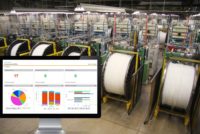Today’s customers have increasingly high standards for quality. After all, errors can be expensive.
A growing number of manufacturers are turning to data collection to prevent errors before they happen. They are using SPC software to alert shop floor personnel of problems, spotlight the quality activities that will make the biggest impact, investigate quality data and mine actionable information, and more.
Modern quality management is about identifying new opportunities to improve products, better one’s processes, and boost operations, experts say.
Today, manufacturers are using SPC solutions to centralize and standardize their data, leveraging it to communicate better across their businesses.
For example, leaders use role-based dashboards to ensure that operators on the shop floor stay on task and streamline workflows. With these tools, quality professionals can easily see and respond quickly to variations in real-time.
They use SPC software so that quality professionals can easily analyze metrics for
real-time operational optimization, using SPC data to quickly see products, process, and operations improvement opportunities.
Corporate executives use visual tools to prioritize the most valuable improvements across the business. With a simple view of their aggregated data, they can use that insight to notice trends and develop ROI strategy.
Customers and auditors’ jobs are made easier from prompt, real-time reporting.
Lastly, leaders must get to know their data. They must view it consistently to understand trends over time. Each positive cycle gives way to the next improvement. A consistent relationship with your data drives excellence in the long-term.
When it comes to improving quality, data collection is just the beginning. Ultimately, extracting meaning from that data empowers leaders to communicate better, strategize and act.


